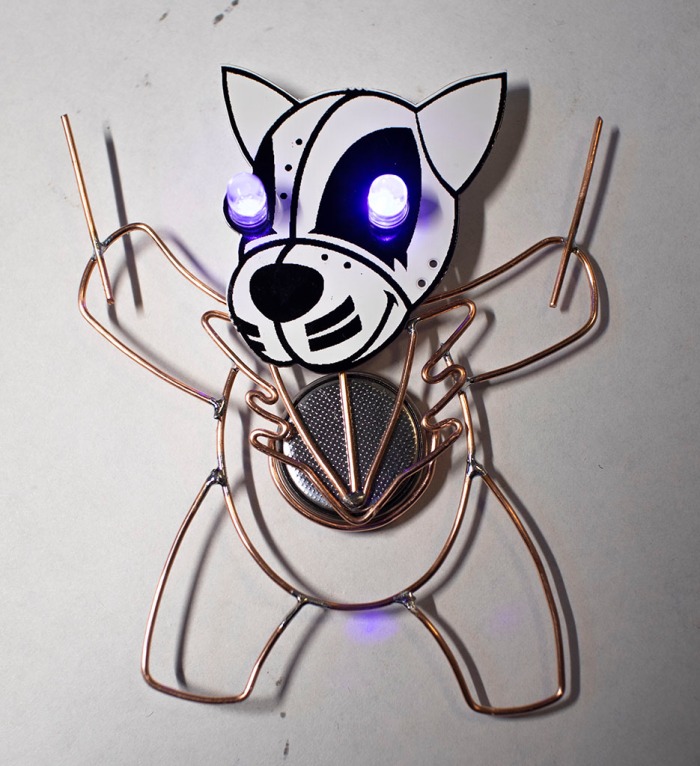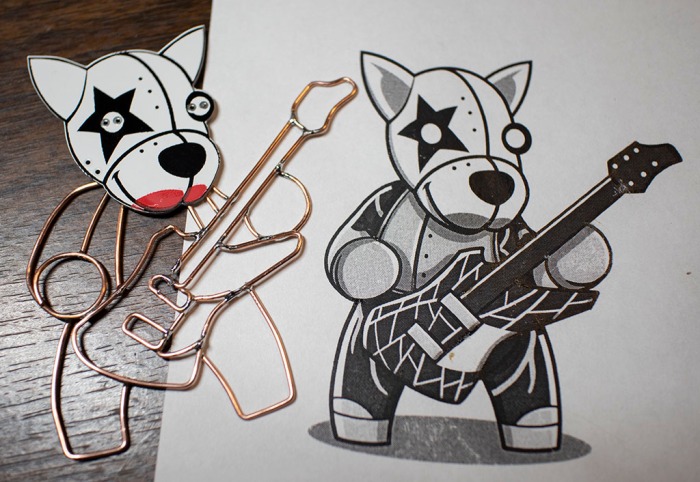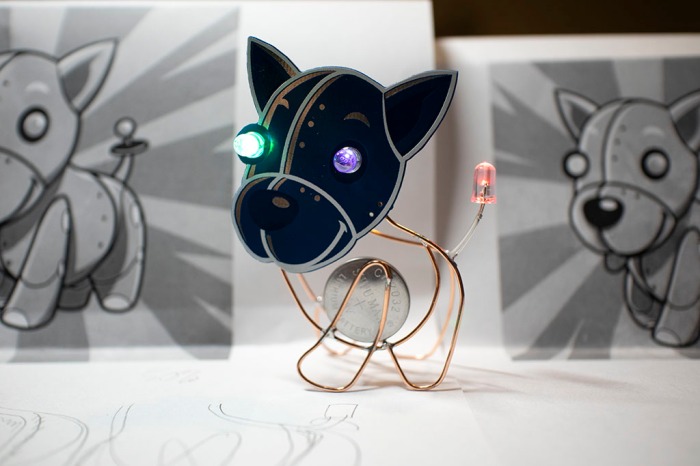One of the scramble before Sparklecon was getting my KISS band back together. On the weekend prior to Sparklecon, the band went on tour in their first public appearance. The good news: they were very well received and people loved them! The bad news: Someone loved them so much they decided to adopt my Spaceman, taking him home without my permission. I was missing a member of the band.
I had already signed up to talk about the band for Sparklecon, and it would be a bit lame not to have the full band at my talk. This means making Spaceman II, but for that I would need another KISS Tindie PCB. Fortunately, Emily came to the rescue! She was also at Superconference and had also picked up a KISS Tindie PCB of her own. She generously donated her panel so I could rebuild my blinky band.

Emily had already soldered a pair of yellow non-blinking LEDs to her Spaceman. For the sake of consistency with the rest of my blinky band, those two LEDs were removed. Then I got to work rebuilding a wire frame body. Given the time crunch, I tried to skim a bit on details and initially started trying to make Spaceman’s guitar out of a single length of wire.

I only got this far, though, before I decided it didn’t look good. I aborted and returned to multi-piece construction. It is more time consuming, but it conveys superior detail.

Unfortunately that aborted experiment put me further behind on schedule. This is not the time to experiment, I need to stick with known solutions. For the most part, I stuck with what I knew worked for the rest of this reconstruction.

I’m sad that I lost my first KISS Tindie Spaceman, but this experience also gave me the opportunity to answer one question I was asked: How long does it take to build a wire frame body for a KISS Tindie? I honestly did not know because when I’m focused on a project like this I lose track of time. Bend wire, compare against drawing, repeat until the curve is right. Then solder that piece, and repeat the whole process for the next piece.
I had guessed maybe each Tindie would take 30-45 minutes. This time, I started a timer just before I removed the yellow LEDs and stopped it right after I took the above picture of a completed KISS Spaceman II. Total time: 2 hours 45 minutes. Even though this included the aborted single-wire guitar, my estimate was clearly way off!
But that time was well spent, I had the full band again for my Sparklecon presentation.



























